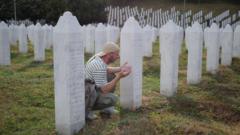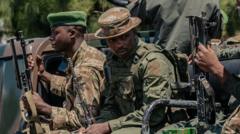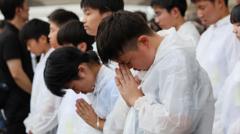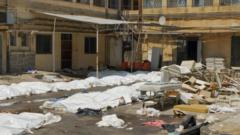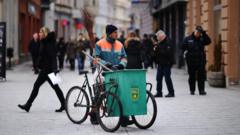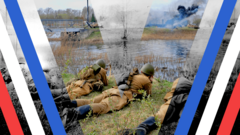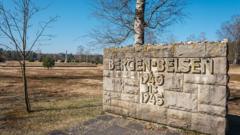In July 1995, over 8,000 Bosnian men and boys were brutally killed by Bosnian Serb forces in Srebrenica, an atrocity that marked the most egregious war crime in Europe since World War II. Today, the shadow of this tragedy continues to loom over Bosnia and Herzegovina, with memorial events starkly contrasting the narratives upheld by different ethnic groups—a reality powerfully depicted in the premiere of the play *Flowers of Srebrenica* at Sarajevo's War Theatre.
The brutal events unfolded as Bosniaks seeking refuge in Srebrenica assumed they were under United Nations protection. Instead, Bosnian-Serb General Ratko Mladić orchestrated the ghastly events, from the forced expulsion of women and children to the systematic execution of captured men, leading to the dumping and later reburial of bodies to conceal the crime.
As the audience at the play rises in applause, viewing it as a tribute to the victims, many in Republika Srpska—the predominately Serb territory—deny the genocide ever occurred, disregarding international verdicts. This denial fuels a persistent grievance, as articulated by lead actress Selma Alispahić, who calls the continued doubt a disservice to victims and a bitter confirmation of the war's ramifications.
The 1995 Dayton Peace Agreement established a framework that, while ceasing conflict, entrenched ethnic divisions by bifurcating the nation into designated territories for different ethnicities. Recently, tensions have escalated following Republika Srpska's president Milorad Dodik's moves to withdraw from state institutions, culminating in a clash with the internationally appointed High Representative, Christian Schmidt, who has been striving to maintain stability.
Commencing the Srebrenica remembrance with tears and silence, citizens soon find themselves in stark contrast just miles away in East Sarajevo, where the environment reflects a complete omission of such observance. Saša Košarac, the minister representing Dodik’s party, underlines a narrative suggesting all three ethnic groups have been victims of the war, and emphasizes a necessity to address overlaps of accountability on all sides—a sentiment perceived by many as an attempt to minimize the unique implications of the Srebrenica massacre.
Yet, amid this swirling turmoil, hope prevails as citizens rally to support Srebrenica's victims. Towards the commemoration, the Memorial Center sees an influx of visitors—cyclists, runners, and mourners alike—seeking to celebrate lives lost. Mirela Osmanović, who works at the Memorial Centre and lost her brothers in the massacre, expresses her unease over rising tensions, articulating concerns for Bosniaks’ safety and a troubling return to pre-war anxieties.
For many, such responses to the entwined legacy of the Srebrenica tragedy illuminate the ongoing struggle for healing amid politicization of memory, insecurity, and the complex web of creation and denial entrenched in Bosnia’s socio-political landscape. As the continuing feud fuels division, those residing in Srebrenica yearn for respect, acknowledgment, and the possibility of unity beyond the shadows of their collective past.

